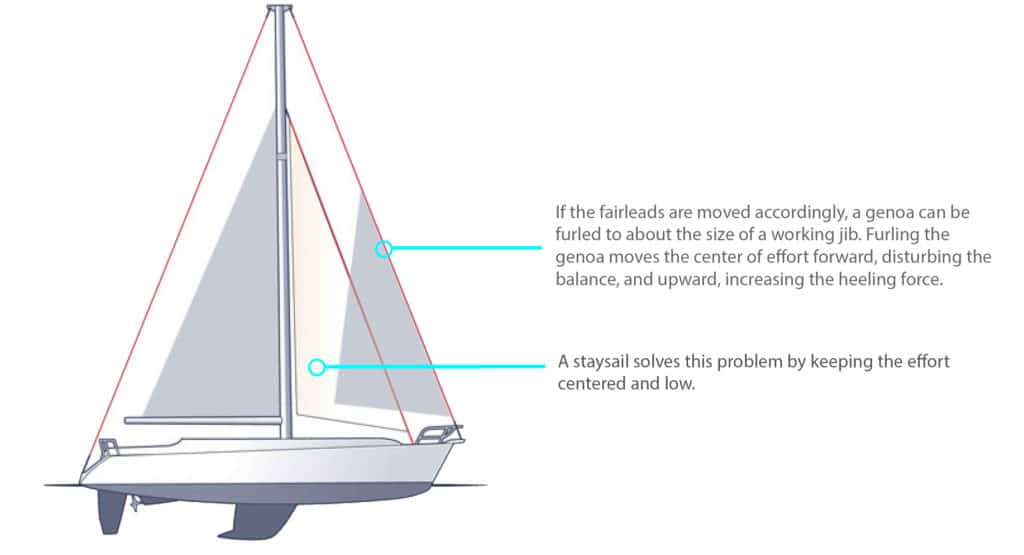
Any bluewater-bound sloop with a genoa on a roller furler should be equipped with a removable inner forestay and carry a heavy-weather staysail that can be easily and rapidly set up when it starts to blow. To preserve the boat’s balance and ability to sail to windward, headsail sail area has to be reduced beyond what’s efficient with the roller reefing alone.
Heading to a destination upwind in a building breeze is the time to roll up the genoa, set up the removable inner forestay, and hoist and trim the already hanked-on staysail that’s been stowed in a turtle bag with sheets attached using a cow hitch, not bowlines, which can shake themselves loose.
The removable stay and bagged sail are stored by the mast when not in use and then brought forward, and the stay is tensioned using a lever that is powerful enough to properly tighten the wire without the need to adjust a turnbuckle or other tensioning device.
When you install this equipment, make sure that the inner stay runs parallel to the headstay, meeting the mast about two-thirds of the hoist of the foretriangle. This means that the stay will meet the mast at about the same place as the head of the reefed main. Most cruising-boat masts are sufficiently overbuilt that when the boat is hard on the wind, the leech of the main will support the load of the staysail stay. Once the stay is installed, with a T-fitting at one end, use the turnbuckle at the other to set the proper tension with the tensioning lever engaged. Once set, reverse the stay end for end, so that the turnbuckle is now at the end connected to the mast; now only the T-fitting needs to be secured when not in use. This keeps the heavy hardware from bouncing around on deck.
The staysail stay’s attachment point on deck must be reinforced and either tied into the forward bulkhead below or supported by an installed rod or removable wire strap that runs to an attachment point on the hull.
The heavy-weather staysail should have no overlap, and the clew should reach right down to the deck. When the boat is tacking, the amount of sheet between the clew and the sheet lead is so short that it can be taken in with few turns of the winch.
Rigged like this, the typical cruising boat should be able to work to windward in 25 knots, with gusts to 30.








